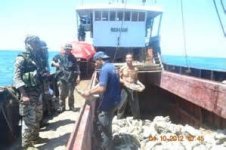Hi,
I have one strand of manufactured "shell pearls", and 3 strands of CFWPs fire-ball or flame-ball type pearls, all purchased quite a few years ago before I knew about the giant clam bead nucleus. I stopped wearing them when I found out.
Recently, I have been seeing these beautiful necklaces of CFWPs pseudo-kasumi "ripple pearls" everywhere on the internet. They can come in massive sizes, much bigger than the original Japanese Lake Kasumigura pearls (which as far as I am aware uses American freshwater mussel shell mother of pearl bead nuclei, like akoya and south sea pearls).
Before I invest in a necklace, does anyone on this forum know the type of shell bead nucleus used in these ripple pearls? The biggest I have "seen" online is 17 mm, is that usual for mother of pearl or is it more likely to be giant clam? Since these are also from China, is there also an economic "high cost of American mother of pearl shell bead" issue involved? When I purchased the fire-balls they were at about the same price point as the current (non ebay, recommended online sellers discounted or sale price) ripple pearls, which is a fraction of south sea pearls.
What about Edison pearls? What are they nucleated with? Based on price alone Edisons are offered at a higher price point similar to south sea pearls so their manufacturer should be able to afford to use traditional mother of pearl bead nuclei?
Thanks for sharing your knowledge.
I have one strand of manufactured "shell pearls", and 3 strands of CFWPs fire-ball or flame-ball type pearls, all purchased quite a few years ago before I knew about the giant clam bead nucleus. I stopped wearing them when I found out.
Recently, I have been seeing these beautiful necklaces of CFWPs pseudo-kasumi "ripple pearls" everywhere on the internet. They can come in massive sizes, much bigger than the original Japanese Lake Kasumigura pearls (which as far as I am aware uses American freshwater mussel shell mother of pearl bead nuclei, like akoya and south sea pearls).
Before I invest in a necklace, does anyone on this forum know the type of shell bead nucleus used in these ripple pearls? The biggest I have "seen" online is 17 mm, is that usual for mother of pearl or is it more likely to be giant clam? Since these are also from China, is there also an economic "high cost of American mother of pearl shell bead" issue involved? When I purchased the fire-balls they were at about the same price point as the current (non ebay, recommended online sellers discounted or sale price) ripple pearls, which is a fraction of south sea pearls.
What about Edison pearls? What are they nucleated with? Based on price alone Edisons are offered at a higher price point similar to south sea pearls so their manufacturer should be able to afford to use traditional mother of pearl bead nuclei?
Thanks for sharing your knowledge.

